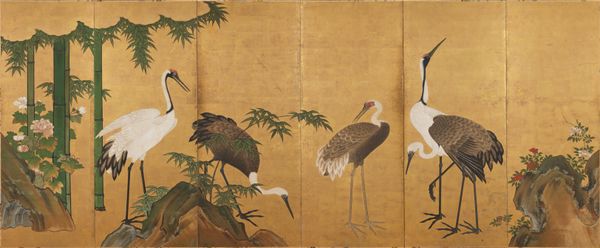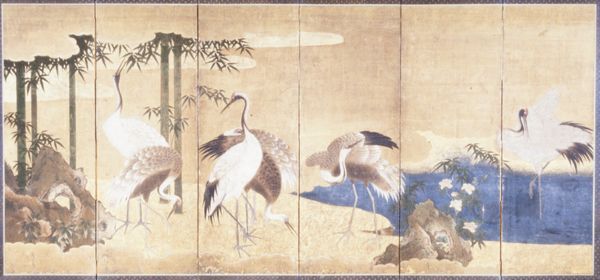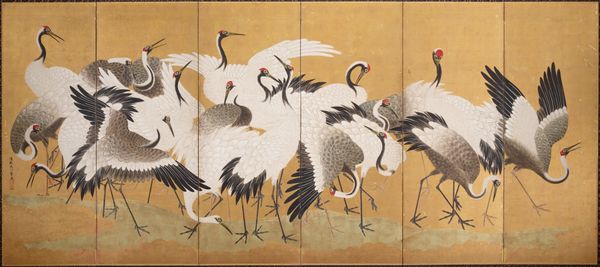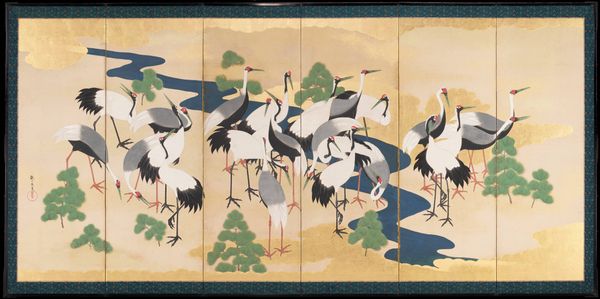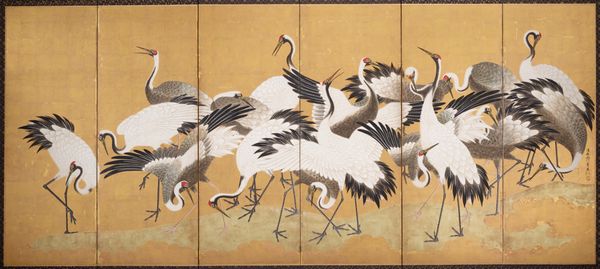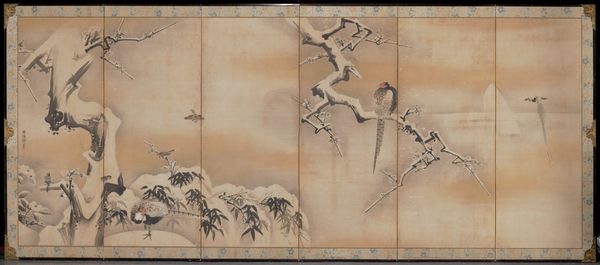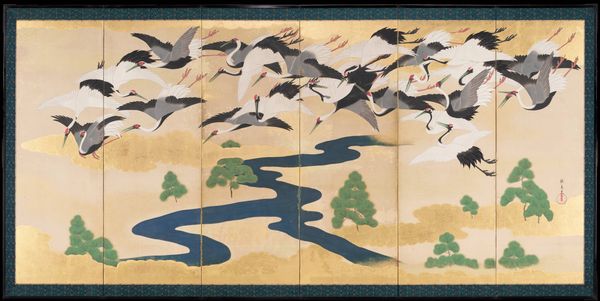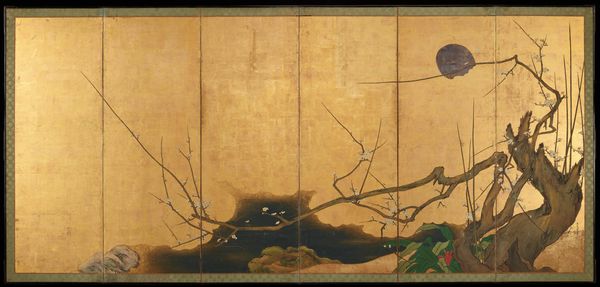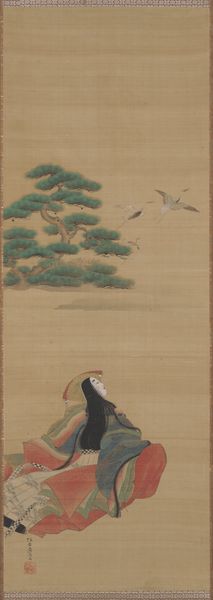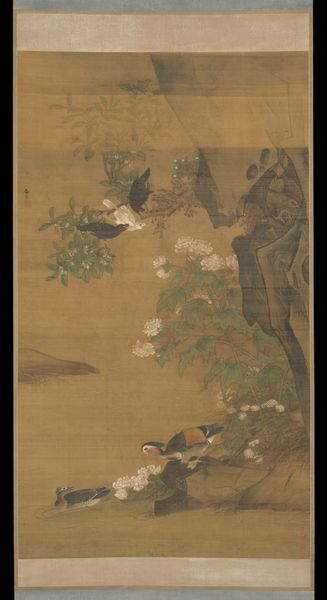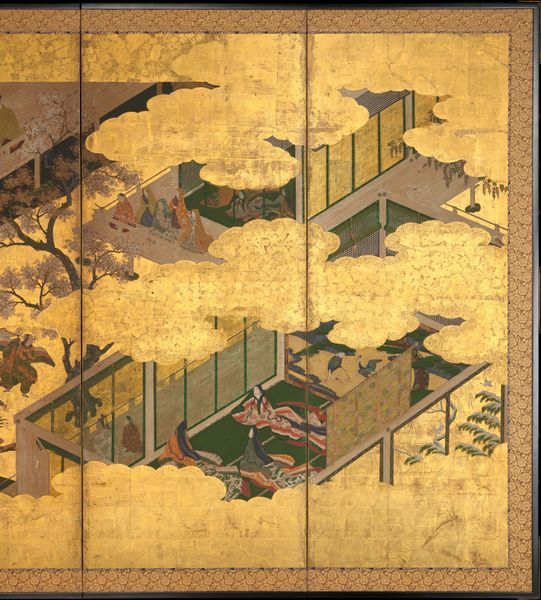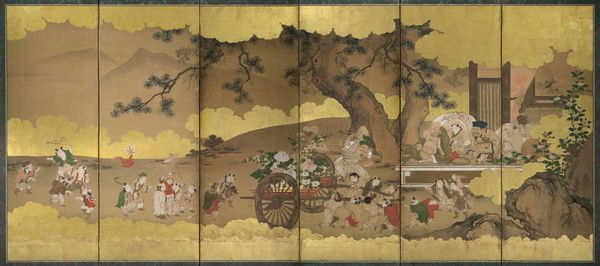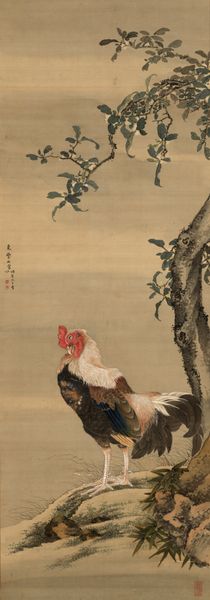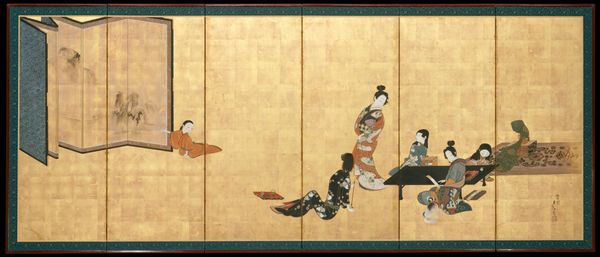![Cranes with Pine [right of a pair of Cranes with Pine and Bamboo] by Kano School](/_next/image?url=https%3A%2F%2Fd2w8kbdekdi1gv.cloudfront.net%2FeyJidWNrZXQiOiAiYXJ0ZXJhLWltYWdlcy1idWNrZXQiLCAia2V5IjogImFydHdvcmtzL2Q4ODEyNmE5LTQ5MmYtNGRiMS1iMjM3LWRhMDUzNWE5ODBmMy9kODgxMjZhOS00OTJmLTRkYjEtYjIzNy1kYTA1MzVhOTgwZjNfZnVsbC5qcGciLCAiZWRpdHMiOiB7InJlc2l6ZSI6IHsid2lkdGgiOiAxOTIwLCAiaGVpZ2h0IjogMTkyMCwgImZpdCI6ICJpbnNpZGUifX19&w=3840&q=75)
Cranes with Pine [right of a pair of Cranes with Pine and Bamboo] 18th-19th century
0:00
0:00
painting, watercolor, ink
#
water colours
#
painting
#
asian-art
#
landscape
#
figuration
#
watercolor
#
ink
#
orientalism
#
watercolour illustration
#
watercolor
Dimensions: 61 3/8 × 139 1/2 in. (155.89 × 354.33 cm) (image)67 1/2 × 145 1/2 × 3/4 in. (171.45 × 369.57 × 1.91 cm) (outer frame)
Copyright: Public Domain
Curator: Welcome. Here we have a stunning, if fragmented, piece attributed to the Kano School from the 18th to 19th century. This section of a folding screen depicts cranes with pine, rendered in ink and watercolours on paper. What are your initial thoughts? Editor: It feels very peaceful, yet formally quite rigid. The gold leaf background creates a sense of timelessness and stillness, although the composition seems unbalanced. The painter uses an interesting compositional approach for organizing cranes and pines in space. Curator: Absolutely. The formal qualities showcase the principles prevalent within the Kano School. Note the dynamic interplay between negative space and areas of intense detail. Consider the compositional arrangement: how do the placement of the pines and cranes guide your eye across the screen? How the diagonal axis created by the pine bough acts as a critical structural component for the painting. Editor: The cranes themselves clearly bear a lot of symbolic weight. Cranes, as you know, are powerful symbols in East Asian culture, frequently embodying longevity, fidelity, and good fortune. The pine reinforces this: these trees represent resilience. To me, it’s a message about endurance. What do you think about the composition and palette choices relating to its cultural roots? Curator: Precisely. This artwork’s strength emerges from its carefully organized compositional elements, not so much cultural allusions, although they add some meanings, perhaps, but more subtly. The somewhat limited color palette is also important. See the use of contrast between gold, muted greens and earth tones that lends this panel a sense of restraint? And what effect does that restrained palette have, contrasted against such rich symbolism? Editor: Good point, though one element that feels very intentional to me, looking at this piece now, is not so much its individual cultural roots, but more its capacity to endure cross-cultural conversations. Its visual language resonates universally, doesn't it? Curator: I agree. While firmly situated within the traditions of the Kano School, it speaks through a formal grammar we can all, on some level, understand, analyze and appreciate, no matter our origin. Editor: Ultimately, both symbolic and formal, “Cranes with Pine” offers more than just a glimpse into a historical school. The work presents enduring messages. Curator: Well said, and perhaps that very enduring message is borne, too, in the structural integrity of the painting’s very composition.
Comments
No comments
Be the first to comment and join the conversation on the ultimate creative platform.
